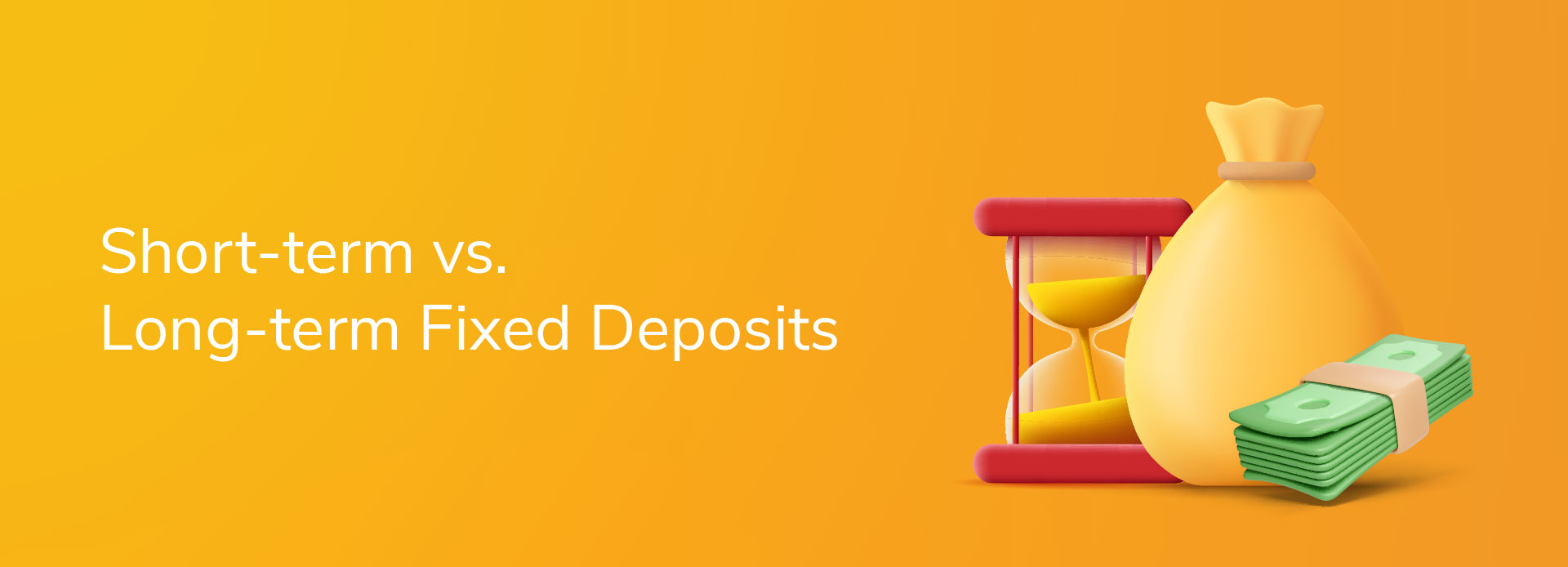
Short-Term Fixed Deposit Vs Long-Term Fixed Deposit
09 May 2024 | By INDIE
Fixed deposits are quite popular amongst individuals looking to grow their savings while ensuring a steady return on investment. They provide a secure avenue to park surplus funds and earn interest over a specified period. However, your decision to invest in fixed deposits does not solely determine the benefits you can avail of. The selected tenure is a crucial parameter that can significantly influence your returns.
Deciding between short-term and long-term fixed deposits can be a crucial decision, impacting your financial goals and objectives. Therefore, understanding the differences between short term FD vs. long term FD is essential for maximising the benefits of your investment and achieving your financial objectives.
In this blog post, we will cover the finer nuances related to short-term and long term fixed deposits, exploring their differences to help you make informed decisions.
What are Short-Term Term Deposits?
Short-term term deposits refer to fixed deposit accounts with relatively brief maturity periods, typically ranging from seven days to two years. These financial instruments allow you to earn a predetermined interest rate on the deposited funds over a short duration.
Here are some key features of short-term term deposits:
● Unlike long term fixed deposits, short-term deposits offer relatively quick access to funds, making them suitable for individuals with immediate liquidity needs.
● Short-term term deposits often have relatively higher interest rates compared to standard savings accounts.
● These term deposits are considered low-risk investments as they are backed by reputable banks and financial institutions. This is what provides security for deposited funds.
Recommended Read: More About Monthly Interest Payout Fixed Deposit
What are Long Term Deposits?
Long term fixed deposits, as the name suggests, allow you to deposit a sum of money with a bank or financial institution for an extended period, typically beyond one year. These deposits offer a secure way to grow savings over a longer duration while earning a fixed interest rate on the deposited funds.
Here are some key features of long term fixed deposits:
● Long term fixed deposits have maturity periods ranging from several years to even decades, depending on the terms offered by the chosen bank.
● These types of FD often come with higher interest rates compared to short-term deposits, providing the potential for greater returns over the extended investment horizon.
● Over the long term, fixed deposit interest compounds, meaning that interest earned will be added to the principal amount, leading to higher overall returns over time.
● Unlike short-term deposits, long term FDs usually have limited liquidity, with penalties or restrictions imposed for early withdrawal, requiring you to commit funds for the agreed-upon duration.
How Can You Build a Sound Financial Plan Using Fixed Deposits of Different Tenures?
Here's how you can incorporate fixed deposits of varying durations into your financial plan:
● Start by evaluating your short-term and long-term financial goals. Determine the amount needed and the time horizon for achieving each goal.
● Allocate a portion of your savings towards short-term and long-term fixed deposits based on your financial goals and liquidity requirements. Consider factors such as emergency funds, upcoming expenses, and long-term investment objectives.
● Invest in short term fixed deposits to address immediate liquidity needs and short-term goals. These deposits offer quick access to funds compared to standard savings accounts, making them ideal for short-term objectives such as vacations, home renovations, or major purchases.
● Allocate a portion of your savings towards long term fixed deposits to secure optimal returns and grow wealth over an extended period.
● Consider diversifying your investment portfolio by combining fixed deposits with other options such as mutual funds. Diversification can help spread risk and maximise returns over the long term.
● Review your financial plan and adjust your fixed deposit allocations as needed.
As detailed above, it is not about choosing between short term FD vs. long term FD but about incorporating both these types of investment avenues into your financial planning in a way that works for you.
Disclaimer: The information provided in this article is generic and for informational purposes only. It is not a substitute for specific advice in your circumstances. Hence, you are advised to consult your financial advisor before making any financial decision. IndusInd Bank Limited (IBL) does not influence the views of the author in any way. IBL and the author shall not be responsible for any direct/indirect loss or liability incurred by the reader for making any financial decisions based on the contents and information.




